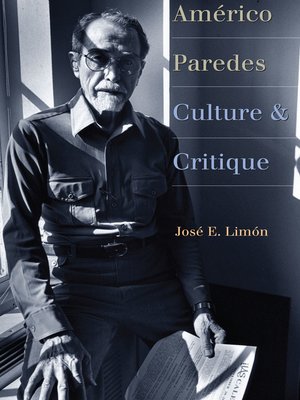Américo Paredes
ebook ∣ Culture and Critique · Jack and Doris Smothers Series in Texas History, Life, and Culture
By José E. Limón

Sign up to save your library
With an OverDrive account, you can save your favorite libraries for at-a-glance information about availability. Find out more about OverDrive accounts.
Find this title in Libby, the library reading app by OverDrive.



Search for a digital library with this title
Title found at these libraries:
| Library Name | Distance |
|---|---|
| Loading... |
Several biographies of Américo Paredes have been published over the last decade, yet they generally overlook the paradoxical nature of his life's work. Embarking on an in-depth, critical exploration of the significant body of work produced by Paredes, José E. Limón (one of Paredes's students and now himself one of the world's leading scholars in Mexican American studies) puts the spotlight on Paredes as a scholar/citizen who bridged multiple arenas of Mexican American cultural life during a time of intense social change and cultural renaissance.
Serving as a counterpoint to hagiographic commentaries, Américo Paredes challenges and corrects prevailing readings by contemporary critics of Paredes's Asian period and of such works as the novel George Washington Gómez, illuminating new facets in Paredes's role as a folklorist and public intellectual. Limón also explores how the field of cultural studies has drifted away from folklore, or "the poetics of everyday life," while he examines the traits of Mexican American expressive culture. He also investigates the scholarly paradigm of ethnography itself, a stimulating inquiry that enhances readings of Paredes's best-known study, "With His Pistol in His Hand," and other works. Underscoring Paredes's place in folklore and Mexican American literary production, the book questions the shifting reception of Paredes throughout his academic career, ultimately providing a deep hermeneutics of widely varied work. Offering new conceptions, interpretations, and perspectives, Américo Paredes gives this pivotal literary figure and his legacy the critical analysis they deserve.







